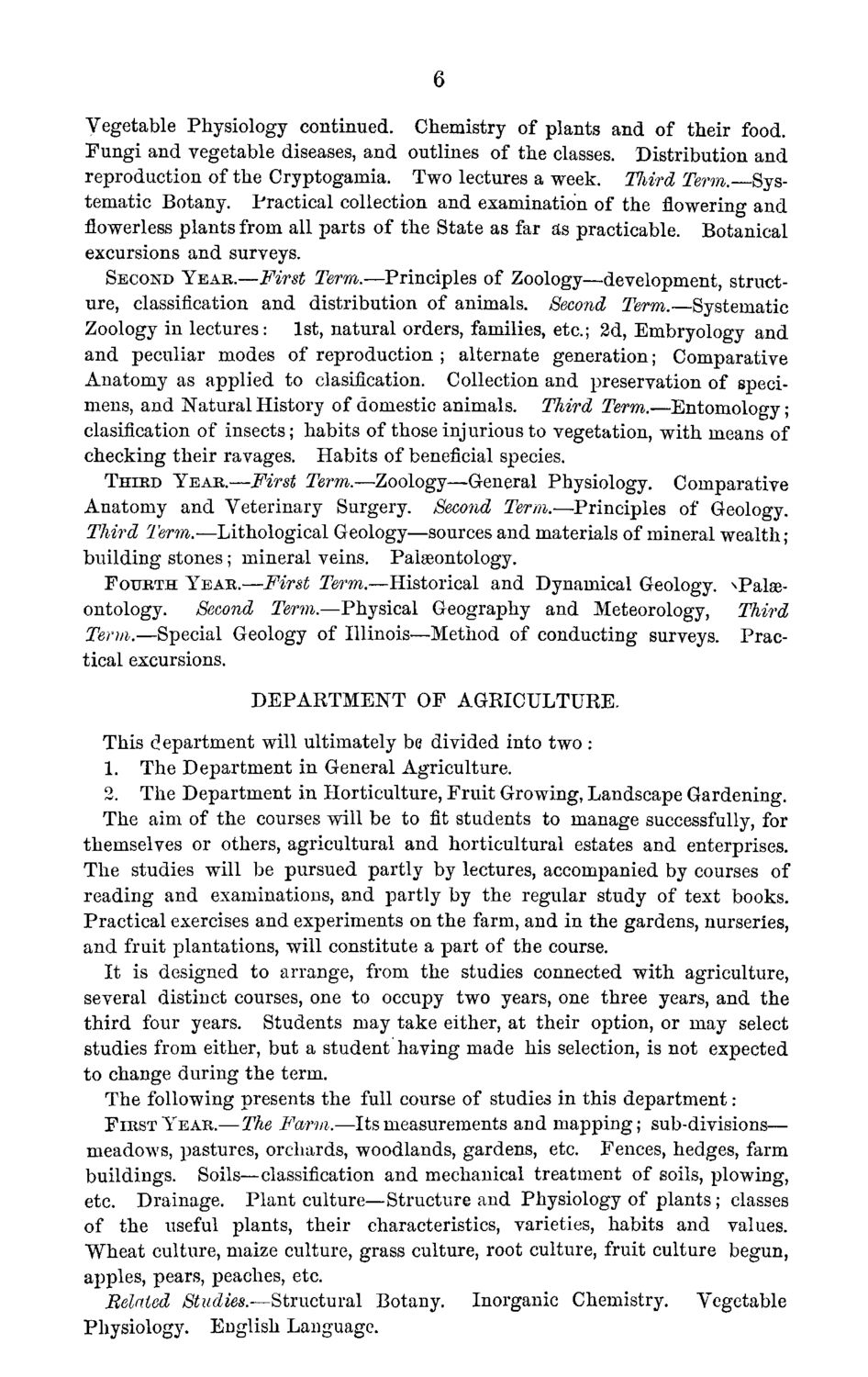| |
| |
Caption: Course Catalog - 1868-1869 VERSION B
This is a reduced-resolution page image for fast online browsing.

EXTRACTED TEXT FROM PAGE:
6 Vegetable Physiology continued. Chemistry of plants and of their food. Fungi and vegetable diseases, and outlines of the classes. Distribution and reproduction of the Cryptogamia. Two lectures a week. Third Term. Systematic Botany. Practical collection and examination of the flowering and flowerless plants from all parts of the State as far as practicable. Botanical excursions and surveys. SECOND YEAR.—First Term.—Principles of Zoology—development, structure, classification and distribution of animals. Second Term. Systematic Zoology in lectures: 1st, natural orders, families, etc.; 2d, Embryology and and peculiar modes of reproduction ; alternate generation; Comparative Anatomy as applied to clasification. Collection and preservation of specimens, and Natural History of domestic animals. Third Term.—Entomology; clasification of insects; habits of those injurious to vegetation, with means of checking their ravages. Habits of beneficial species. THIED YEAK.—First Term.—Zoology—General Physiology. Comparative Anatomy and Veterinary Surgery. Second Term.—Principles of Geology. Third Term.—Lithological Geology—sources and materials of mineral wealth; building stones; mineral veins. Palaeontology. FOURTH YBAE.—First Term.—Historical and Dynamical Geology. ^Pal»ontology. Second Term.—Physical Geography and Meteorology, Third Term.—Special Geology of Illinois'—Method of conducting surveys. Practical excursions. DEPARTMENT OF AGRICULTURE. This department will ultimately be divided into two : 1. The Department in General Agriculture. 2. The Department in Horticulture, Fruit Growing, Landscape Gardening. The aim of the courses will be to fit students to manage successfully, for themselves or others, agricultural and horticultural estates and enterprises. The studies will be pursued partly by lectures, accompanied by courses of reading and examinations, and partly by the regular study of text books. Practical exercises and experiments on the farm, and in the gardens, nurseries, and fruit plantations, will constitute a part of the course. It is designed to arrange, from the studies connected with agriculture, several distinct courses, one to occupy two years, one three years, and the third four years. Students may take either, at their option, or may select studies from either, but a student having made his selection, is not expected to change during the term. The following presents the full course of studies in this department: FIRST YEAR.— The Farm.—Its measurements and mapping; sub-divisions— meadows, pastures, orchards, woodlands, gardens, etc. Fences, hedges, farm buildings. Soils—classification and mechanical treatment of soils, plowing, etc. Drainage. Plant culture—Structure and Physiology of plants; classes of the useful plants, their characteristics, varieties, habits and values. Wheat culture, maize culture, grass culture, root culture, fruit culture begun, apples, pears, peaches, etc. Belated Studies.—Structural Botany. Inorganic Chemistry. Vegetable Physiology. English Language.
| |